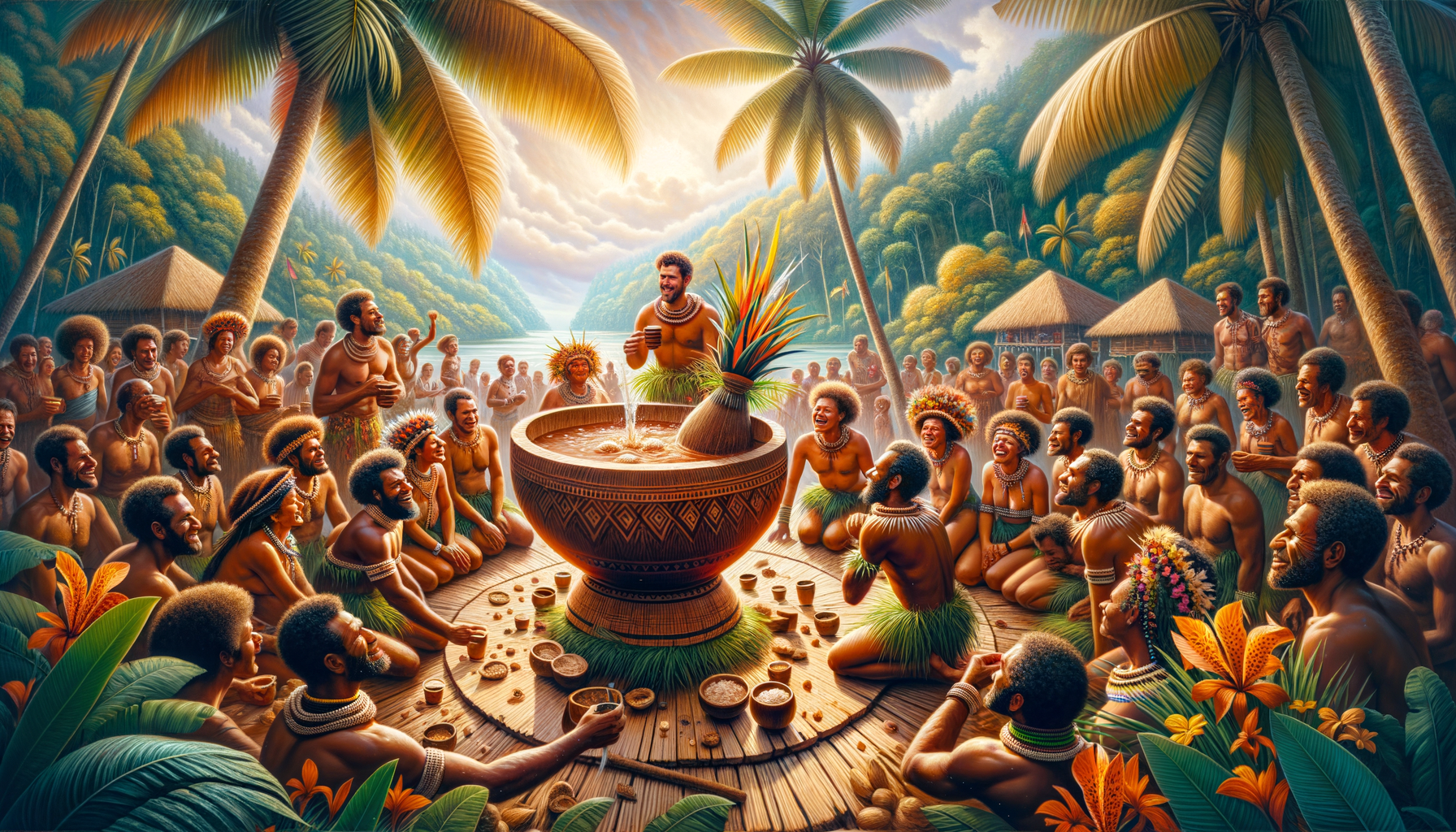Introduction
Imagine being in the green forests of Papua New Guinea, with tall coconut trees around you and the sound of tribal music in the background. This is where Matt Warren, co-founder of Psychedelic Water, tried kava for the first time. It wasn’t just a taste test—it was diving into a tradition that’s been around for hundreds of years. If you’re curious about kava in Papua New Guinea and its rich culture, you’re in the right place.
The Rich Legacy of Kava in Papua New Guinea
Historical Background:
Kava, known scientifically as "Piper methysticum," has long been a part of life in Papua New Guinea, especially along the coast and on the islands. The kava plant came to these islands through ancient trade routes and became very important to tribal life. It’s more than just a drink; it’s a sacred offering, a traditional medicine, and a way to bring people together.
Cultural Integration:
In Papua New Guinea, kava has a special place in both everyday life and big ceremonies. People drink it at community gatherings to feel close and united. Unlike some Pacific Islands where kava is only for rituals, in Papua New Guinea, people enjoy it both during ceremonies and regular meals, showing how important it is in their lives.
Unique Ways to Make Kava in Papua New Guinea
Traditional Techniques:
Making kava in Papua New Guinea is a special ritual. Usually, the roots are picked, dried, and ground into a fine powder. This powder is mixed with cold water in a wooden bowl called a ‘kumee.’ The mixture is then strained through coconut fibers to make a smooth, earthy drink. This careful process often includes singing and storytelling, making it an event just as important as drinking it.
Modern Adaptations:
In today’s fast-paced world, traditional kava preparation might take too long. So, people now use pre-flavored kava powders and kava concentrates, making it easier to enjoy while keeping its strong effects. However, many people still love the traditional way of making kava because of its special ritual.
Exploring Different Types and Tastes of Kava
Varieties of Kava:
Papua New Guinea kava comes in many different types, each with its own unique taste and effects. Common types include ‘Isa’, known for its calming effects, and ‘Tuva,’ which has a stronger, more aromatic flavor. These different types show the variety in Papua New Guinea’s regions and communities.
Tasting Experience:
Get ready for a taste adventure when you try kava from Papua New Guinea. The first sip usually tastes earthy, with a bit of pepper and a slight sweetness. Some say it makes their tongue feel a little numb, which surprised Matt Warren in a good way. “It’s like meeting an old friend," he says, "familiar yet new each time.” Each sip brings different flavors and experiences.
The Social Side of Kava Drinking
Community and Connection:
In Papua New Guinea, drinking kava is all about being social. Whether it’s a big festival or a small family gathering, kava is often at the center. Traditional kava ceremonies are group experiences meant to encourage talking, resolve conflicts, and make communities stronger. Sharing kava helps bring people together and makes it easier to connect with each other.
Stories from Locals:
During Matt Warren’s travels, he heard many local stories about how important kava is. One elder told him about how kava helped solve a long-standing fight between two rival tribes. The leaders shared a bowl of kava, which helped them start talking and eventually make peace. “Kava is more than a drink,” the elder said. “It’s a bridge.”
Health Benefits and Clearing Up Myths
Documented Benefits:
Kava is known for its many health benefits. Traditionally, it’s been used to ease stress, help people relax, and treat minor health problems. Scientific studies have found that kava can lower anxiety without being addictive like some medicines. People who drink kava often say they feel better, sleep well, and enjoy their social interactions more.
Debunking Myths:
Even though kava has many benefits, some people still have wrong ideas about it. One common myth is that kava can be harmful. But kava is generally safe when used responsibly. It’s important to educate people and remind them that kava, like any supplement, should be consumed in moderation and with an understanding of its effects.
Bringing Papua New Guinea Kava to the World
Current Industry Trends:
The global kava industry is growing. Efforts are being made to introduce kava from Papua New Guinea to the world. Sustainable farming and strict quality control ensure that the kava sent to international markets is the best quality. Export initiatives help small farmers reach global markets, sharing the rich culture of Papua New Guinea kava worldwide.
KavaKist’s Role:
At KavaKist, we love sharing the flavors and cultural significance of Papua New Guinea kava with everyone. Our products are inspired by traditional recipes and methods, ensuring an authentic experience. Whether you’re an experienced kava drinker or a curious beginner, our range of Papua New Guinea kava products has something for you.
Conclusion
Papua New Guinea kava is more than just a drink; it’s a journey through history, culture, and community. Embracing the traditions and unique qualities of Papua New Guinea kava lets us appreciate not just a flavorful beverage but also a deep cultural practice. So, why not take a sip and join this incredible tradition? Come to KavaKist and explore the world of Papua New Guinea kava.
Callout Section
Community Engagement:
We’d love to hear your kava stories and experiences! Share your thoughts in the comments or join us at our next kava meetups. Let’s celebrate kava together!
References/Further Reading (if applicable)
- Journal of Ethnopharmacology: Kava in the Pacific Islands
- Kava: The Pacific Elixir, The Definitive Guide to Its Ethnobotany, History, and Chemistry
- Psychedelic Water: Matt Warren’s Journey with Kava

Leave a Reply